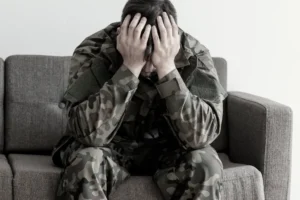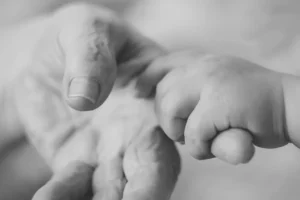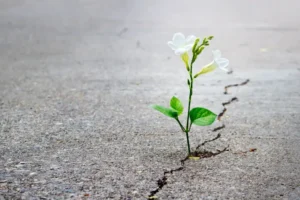What is a Trauma Timeline?
Definition
A trauma timeline is a visual or written representation of key events in your life, organised chronologically. It includes not just traumatic moments but should also include other particularly meaningful experiences and turning points (and also achievements).
Procedure
The basic process of creating a trauma timeline involves writing the timeline of events down or creating a tangible representation of it. This sorts out challenging, overwhelming and traumatic events. They become more tangible and can be viewed more objectively. The life story becomes more consistent, it becomes clear what came first and what came after.
This involves listing memories, life events and trauma according to dates. Some people use simple tables or charts of the events on the events, while others prefer creative methods such as drawing or collaging to capture their timeline. By writing it down in electronic one can add further events / details if additional memories come up over the of the trauma psychotherapy.
Areas of Application
Creating a trauma timeline can bring structure to a fragmented memory, especially for clients who have difficulty placing their life events in chronological order. This can be particularly helpful in the case of complex PTSD, repeated traumas over a long period of time or periods of time with a series of different traumas
How Can a Trauma Timeline Help You?
Emotional Distance & Perspective
The trauma timeline is created from the perspective of an objective observer. One of the immediate benefits of building a trauma timeline is that it helps shift your perspective. Instead of being overwhelmed by trauma, you begin to see it as part of your broader life story. This process allows you to detach from overwhelming emotions and view your experiences with greater clarity.
The trauma timeline is created from the perspective of a neutral observer.
Organising Memories
Normally, the brain organises our thoughts and memories so that we can make sense of our past. This usually happens in the form of linear or spacial mental representation. This organisation of memories is disrupted by shock events and overwhelming emotions.
During shock events the body releases high levels of stress hormones like adrenaline, noradrenaline and cortisol. The body focuses all energy on survival and goes into highly activated survival states like fight, flight, freeze or collapse. As part of these states the instincts take over, while the higher cognitive functions of the brain are used only as far as needed for survival. Some experiences would also be too painful and therefore do not become consciousness at all. As a result, memories may become fragmented, distorted, deleted or repressed. This protective mechanism helps individuals survive in the moment of traumatic shock (and there after) but can make it difficult to recall important details or sequences of events later on.
In addition, highly charged states can also – regarding the organisation of memories – be torn out of the context of the sequence of other life events. This is particularly relevant if a shock cannot be landed sufficiently or further shock events follow in close proximity.
A trauma timeline helps you to bring order and structure to what may feel like a chaotic period of your life. This allows you to get a better grasp of the order and sequence of events. You get a grasp on your own life story and will be better able to articulate your history to others, including loved ones and therapists.
A trauma timeline helps bringing order into overwhelming or chaotic events.
Connecting the Dots
Creating a trauma timeline is like assembling the pieces of a puzzle. It helps you connect the dots between past events and current experiences, fostering a deeper understanding of yourself.
By creating a trauma timeline, there are the following opportunities to better understand your own history:
- Understanding Patterns and Contexts: A trauma timeline reveals how certain events are connected, uncovering patterns that may not have been obvious before.
- Relating Current Symptoms to Past Events: You may begin to understand why certain triggers cause strong reactions and how these are rooted in past experiences.
- Recognising the Impact of Childhood Experiences: Early childhood trauma and later life traumatic events often shape how you respond to current situations. Understanding these connections can have a relieving effect.
Prepare for Trauma-Reprocessing
Creating a trauma timeline can be a useful first step toward integrating fragmented memories and fostering emotional healing. By mapping out your past from a neutral perspective, you improve coherent understanding of your life story.
The factual clarity provides a solid foundation for moving towards re-processing, release and integration of the trauma. This way, the trauma timeline can support therapy and the structured exploration of the past. It allows you to approach therapy sessions with greater focus, pinpointing areas that need attention while fostering a deeper sense of control over your own life narrative.
With a trauma timeline, you gain valuable insights and a stronger basis for therapeutic processes:
- Processing Fragmented Memories: A structured timeline provides a safe way to process events in small chunks – Allowing the gradual integration of fragmented or overwhelming memories
- Fostering a Sense of Control: By organizing your narrative, you regain a sense of mastery over your life and your life story. – This can be an important step in integrating events into your identity and sense of self.
- Focus for Therapy Sessions: Understanding the roots of unresolved pain can help you approach therapy sessions with a clearer focus.
- Roadmap for Therapy: The timeline can act as a guideline for the overall therapy-process, helping both you and your therapist to plan the overall approach.
Having a objective fact base can prepare the emotional processing and support the integration of cognitive understanding and emotional integration.
Additional Focus on Successes
Your life so far has been more than a series of traumatic events. A trauma timeline is therefore not just about cataloging painful memories; it’s should also record successes and positive highlights of your life.
By also noting your successes and positive memories, you can recognize that you are more than your trauma symptoms. You can look at your resources and also see how far you have come. This realization promotes a realistic view of yourself.
You are more than your trauma history!
Working with your Trauma Timeline
Creating a trauma timeline can feel challenging. Please work in small steps and don’t over-extend yourself emotionally.
Important Caveats
If you are easily triggered into flashbacks, traumatic states, strong emotions or dissociation, get the support of an experienced therapist.
Step 1: Get into a Neutral Observer Perspective
Take the perspective of a Neutral Observer: Look at your own life like you are looking at yourself on a movie screen or from an neutral observer perspective.
Step 2. Brainstorm Key Events
Write down significant life events, both traumatic and positive. Stick to the facts – what actually happened. Don’t worry about perfect chronology at this stage—just write the events down.
Step 3: Organise Events Chronologically
Arrange the events in chronological order. This helps to create a coherent sequence and to recognize patterns in the course of time.
At a later stage, you may find that you have missed events or details. Add them to your time line.
Step 4: Analyse the Events & Add Details
Factually write down what happened to you physically and emotionally during each event and thereafter. Rank the events by importance or describe how important they are on a scale of 0-10, with 10 being very important. This can help connect past experiences to current emotional and physical patterns.
Step 5: Review & Reflect
Reviewing and reflecting on the events can provide valuable insights into your life journey and paving the way for healing:
- Life-Shaping Events: Which events have had the most significant impact on the direction of your life? Understanding these pivotal moments can reveal how trauma or positive experiences influenced your choices and life journey.
- Sources of Support: Who provided emotional support after traumatic events? – Secure relationships play an important role in restoring and securing emotional stability.
- Unmet Needs: Conversely, who failed to provide emotional support when you needed it most? Acknowledging these gaps can unveil unresolved feelings and difficult relational dynamics.
- Current Triggers & Symptoms: Are there particular triggers related to these events in the present? What current emotional or physical symptoms or sufferings are triggered?
- Intrusive Memories: Which events or people show up repeatedly in intrusive thoughts, flashbacks, or nightmares? Pinpointing these experiences can help you and your therapist to focus on areas that need attention.
- Life Patterns – Avoidance and Repetition: What do you avoid to this day as a result of these events? Where do you seem to repeat similar patterns or run into similar issues repeatedly?
- Personal Growth: How have you demonstrated resilience in the face of challenges? Recognize your strengths and gain an awareness of self-efficacy.
- Additional Events: Are there any events you have missed? Just add them to your trauma timeline.
Taking time to reflect on these questions not only brings clarity but also empowers you to reclaim the narrative of your life with greater understanding and self-compassion. Understanding these topics can help you become aware of triggers and identify additional sources of support.
Download: Trauma Timeline Template
To help you get started, we’ve created a simple and effective trauma timeline template in Microsoft Word format. You can download it and customise to your needs. This template provides a structured format to organise significant life events, reactions and possible related symptoms.
Use it as a guide to gain clarity, recognise patterns, and track your healing journey.

Whether you choose to work with the template by yourself or share the trauma timeline with your therapist, this tool can be a useful part of your recovery process.










